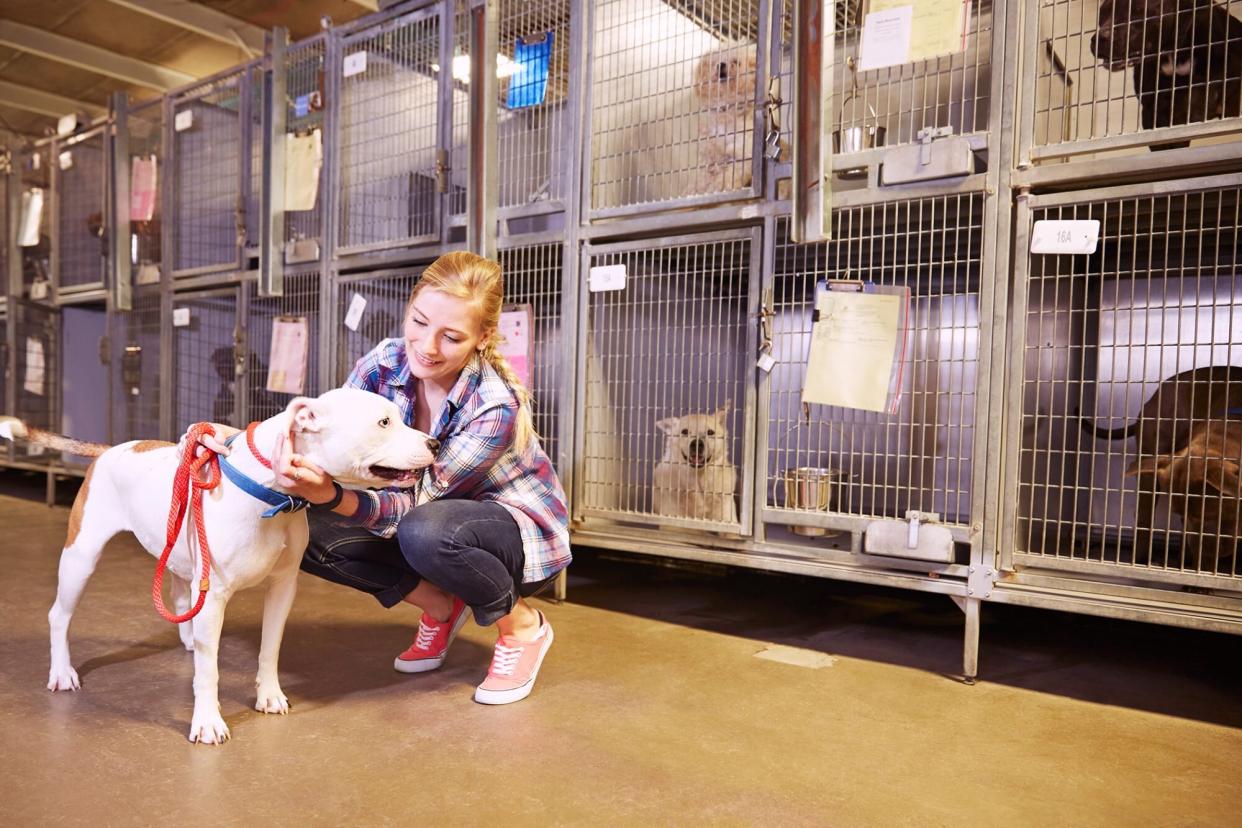The U.S. Saw More Dogs and Cats Killed in Shelters Last Year, the First Increase in 5 Years

Camille Tokerud / Getty
Last year saw more dogs and cats killed in United States animal shelters than in 2020—the first time in five years the number of euthanized pets has increased yearly.
Best Friends Animal Society released its 2021 shelter data Tuesday, showing that about 355,000 dogs and cats were killed in American shelters. That's up 8,000 from a record-breaking 2020—when 44.5 percent fewer animals were killed compared to 2019.
Officials in part blamed the increase on the anomaly of 2020. Shelters took in far fewer pets during the height of the COVID-19 pandemic, but when semi-normalcy returned in 2021, more animals started arriving in shelters. Adoptions couldn't keep up.
"A lot more animals are sitting in shelters waiting for their adopters," Marc Peralta, Best Friends' chief programs officer, tells Daily Paws.
Best Friends began tracking sheltered animals in 2017. While last year's trend reversal is unfortunate, it concluded more than half of U.S. shelters have earned "no-kill" status. Two entire states kept that distinction as well.
RELATED: U.S. Animal Shelters Are Under More Pressure Than Ever. Here Are 6 Ways You Can Help
Too Many Pets Arriving
Best Friends' data covers 94 percent of American shelters; the other 6 percent comes from estimates. It found that compared to 2020, shelters took in 8.1 percent more dogs and cats last year. That's a stark change. In 2020, roughly 1 million fewer animals entered shelters than in 2019.
"Unfortunately, the setback in lifesaving is largely due to the historic decreases in pets entering shelters in 2020," Julie Castle, CEO, said in a news release. "As shelters began to reopen in 2021 in increasing numbers, so did the number of pets entering their facilities … Sadly, the number of pet adoptions could not keep pace with the increased intake."
Yet, shelters—often with limited, stretched staff—were still working hard to save lives, Best Friends said. The number of animals euthanized increased by just 2.3 percent. In an online post, Castle argued for the lifesaving momentum, noting the number of animals killed in American shelters in 2015 was around 2 million—more than five times the 2021 number.
In 2021, shelters recorded a "save rate" of 83 percent. To be considered a no-kill organization, shelters and rescues have to record a save rate of at least 90 percent. (The other 10 percent is allotted for dogs and cats who have health or behavioral problems that necessitate humane euthanasia.)
Two states—New Hampshire and Delaware—retained their no-kill status, meaning the shelters across the state averaged a save rate above 90 percent. According to Best Friends, three other states—Rhode Island, North Dakota, and Vermont—needed to save fewer than 100 animals each to earn the no-kill designation.
RELATED: Coco Is a Silly Dog Who Loves His People, So Why Has He Spent More Than 1,000 Days in a Shelter?
You can see how your state and county did via the Best Friends' dashboard. If your local shelter has a lower save rate, they probably need your help, Peralta says. The shelter is likely crowded, forcing euthanizations. Can you volunteer? Adopt? Foster?
"It's not because the shelter doesn't care," he says.
Cats More at Risk
If you're a cat lover, chances are your shelter could use your help volunteering or fostering cats.
In 2021, cats were killed in shelters twice as much as dogs, who often have easier paths to adoption, Peralta says. He thinks one way to potentially reduce the number of cats in shelters is through TNR—trap, neuter, return.
The process applies to community cats—the feral cats who live outside in colonies. Veterinary staffs will capture the cats, neuter or spay them, vaccinate them, and then release them back into their outdoor habitats. It allows the cats to keep living their lives without being able to reproduce.
Plus, those cats aren't socialized to people—or as Peralta put it: They won't sit on your lap to watch This Is Us—so they usually can't be adopted. Allowing them to continue living outside keeps space free in the shelter.
To save more animals, he says shelters will have to find adoption strategies that work—specific events, setting adoption appointments, removing barriers to adoption—while the general public stays open to adopting dogs they might not originally consider.
"It really is getting more people back to thinking about adopting from a shelter or rescue," he says.

